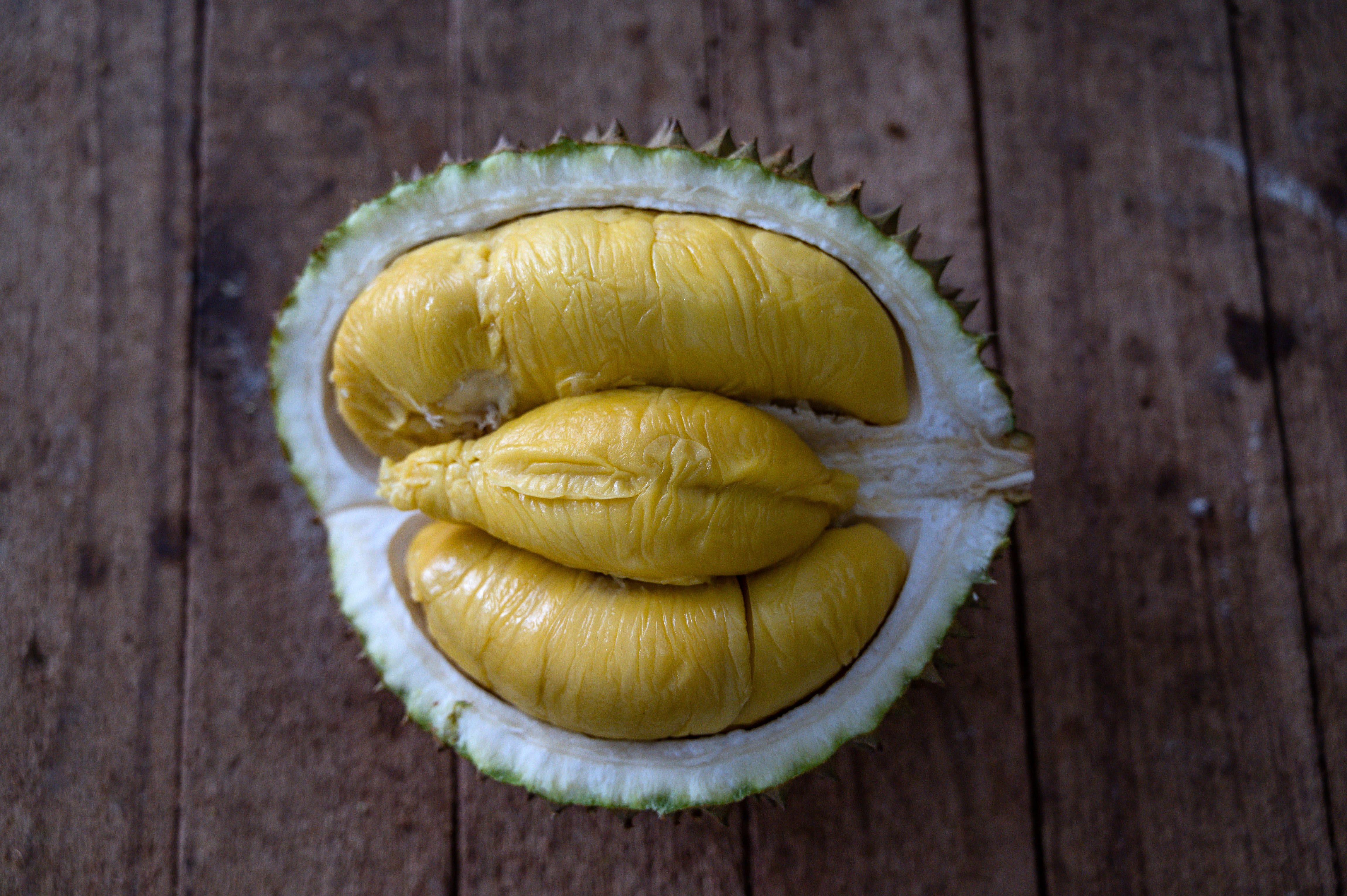Scientists turn durian waste into bandages — and the internet has questions
A durian’s soft, yellow flesh inside its thorny green husk seen at a shop in Kuala Lumpur, Malaysia.
Mohd Rasfan | AFP | Getty Images
Some love it, while others loathe it.
Durians are banned on all public transportation in Singapore due to their smell — which some have likened to sewage or smelly socks. Some hotels in Southeast Asia even stop their guests from bringing the fruit into the rooms.
Yet some durian-lovers are willing to pay top dollar for the “king of the fruit” — with someone reportedly parting with a whopping $48,000 for one in 2019.
But there may be a new reason to appreciate the prickly fruit.
Scientists in Singapore are using durian husks to create antibacterial bandages they say can heal post-surgery wounds.
Repurposed rinds
The technology — developed by a team of researchers at Singapore’s Nanyang Technological University (NTU) — uses an inexpensive process to extract cellulose from the fruit’s thick, green husks. The cellulose is mixed with glycerol to create a soft, silicone-like gel, which can be cut to produce plasters, according to the university.
As long as Singaporeans keep eating durians, we can keep making these bandages.
William Chen
Researcher at Nanyang Technological University
Twitter erupted with questions, and many focused on one thing: the fruit’s pungent smell.
Some wondered if the durian’s strong smell can be detected on the bandages, or if wearers will be barred from public buses.
Chen insisted the bandages are odorless.
Others joked about it, with one saying — tongue-in-cheek — that it wasn’t surprising that durian plasters can kill bacteria.
Despite the reactions, researchers say the innovation could help solve a serious environmental problem: food waste.
“It ties in with our drive towards developing innovations to reduce food waste as a whole,” said William Chen, the director of NTU’s Food Science and Technology Program and lead scientist behind the innovation.
Professor William Chen and a member of his team experiment on durian husks.
NTU Singapore
At least one durian vendor is excited about the prospects.
“That invention … is a fantastic way to recycle the husk,” James Wong, who sells durians in Singapore, told CNBC. He said durian peels are currently thrown away and he pays waste disposal companies to clear them. “To be able to sell the husk to get money is way better.”
80% of the fruit’s weight
Food in Singapore is relatively cheap as it’s highly subsidized by the government, Chen told CNBC.
“The downside of this affordable and abundant food is that we don’t really value the food,” he said.
Scientists at Nanyang Technological University developed a hydrogel bandage made of upcycled durian husks.
NTU Singapore
To mitigate the problem of food waste, Chen decided to experiment with durian husks, a material that’s typically thrown away after the soft, yellow flesh of the fruit is consumed. The husk can account for about 80% of the fruit’s weight.
Durians were the choice of fruit for several reasons, the researcher said.
Large fruits like durians give scientists the required volume to work with. They also have high fiber content, which makes them suitable for the process.
The availability of durians also played a factor, Chen said.
“Singapore consumes 12 million durians a year,” he said. “As long as Singaporeans keep eating durians, we can keep making these bandages.”
Benefits and drawbacks
According to Chen, bandages made from durian husks are both environmentally and medically beneficial. Unlike existing plasters, the new bandages contain hydrogels, which can protect wounds and keep them moist.
Some medical experts are onboard with the innovation too.
“The hydrogel bandages produced from durian husk performed equivalently well to those in the market,” said Associate Professor Andrew Tan, a metabolic disorders expert at NTU’s medical school, who is not part of the bandage project.
The hydrogel provides moisture which helps remove infected tissue and encourages healing, he said, adding that “hydrogels may also cool the wound which is helpful in alleviating pain.”
People wait in line to buy durians in Singapore on June 24, 2021.
Suhaimi Abdullah | NurPhoto | Getty Images
“I have always believed that nature has the answers to everything,” said Priyadarshani Kamat, a Singapore-based homeopath. “In the past, I’ve seen how bandages made of potato peels help burn victims recover their skin quickly, and this [durian] hydrogel is similar to that.”
Durian bandages aren’t primed to replace all bandages — not yet anyway. Tan pointed out they aren’t suitable for heavy wounds, as they are mostly composed of water.
They aren’t 100% biodegradable either. While the team has managed to replace the soft, cushioned layer with the durian hydrogel, the outer adhesive part is still made of plastic, said Chen.
Still, Chen and his team hope to bring the durian husk bandages to market within the next two years.
It makes me feel slightly better about binging on durians because I know the husks can be used for a good cause.
Xin Yi Lin
Singaporean student
“I want to turn research into something useful to society,” Chen told CNBC.
He added that such innovations should not replace the need to generate less waste. “We don’t want these innovations to fire-fight with increasing waste — the idea is to reduce it at its source,” he said.
After hearing about Chen’s research, one durian-lover felt better about eating the fruit.
“I know the durian husks, especially during durian season, contribute to a lot of waste,” said Singaporean student Xin Yi Lin, who is a self-proclaimed durian-fanatic. “It makes me feel slightly better about binging on durians because I know the husks can be used for a good cause.”
For all the latest health News Click Here

